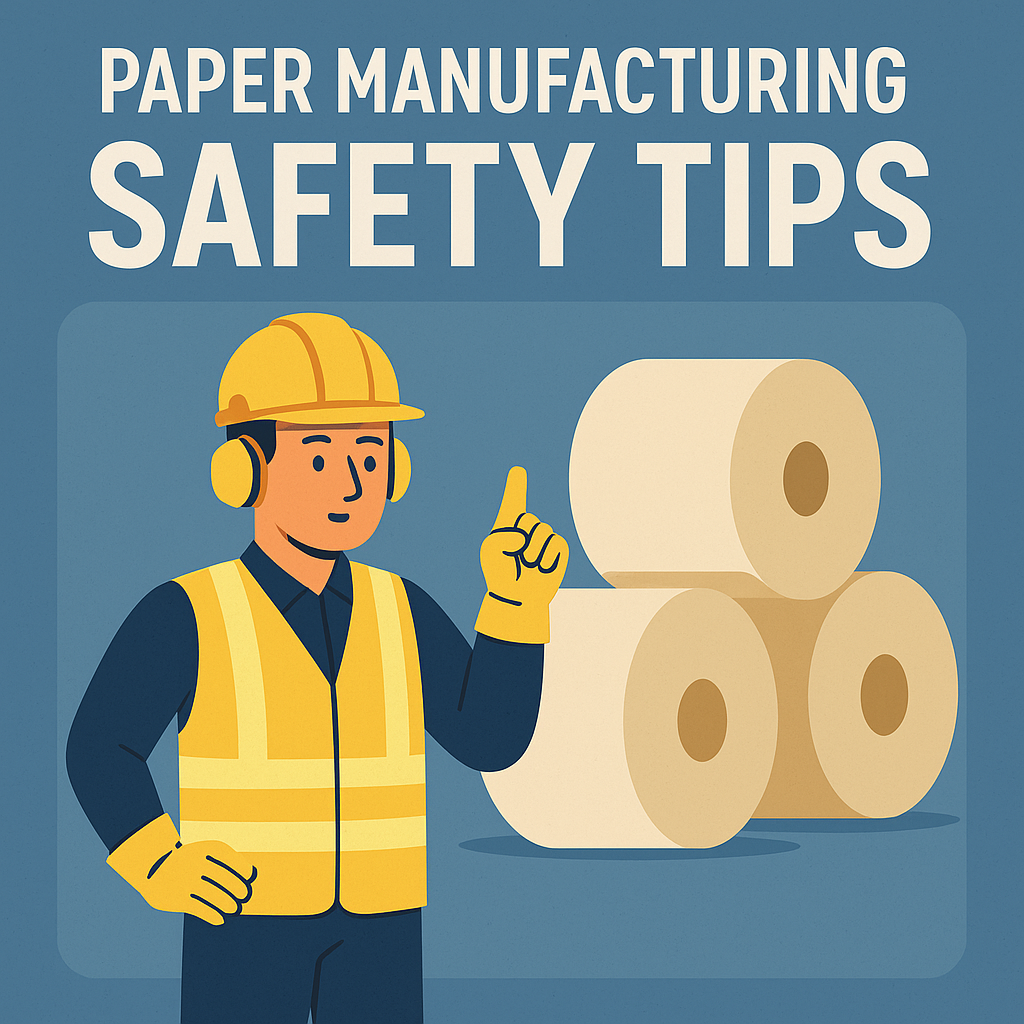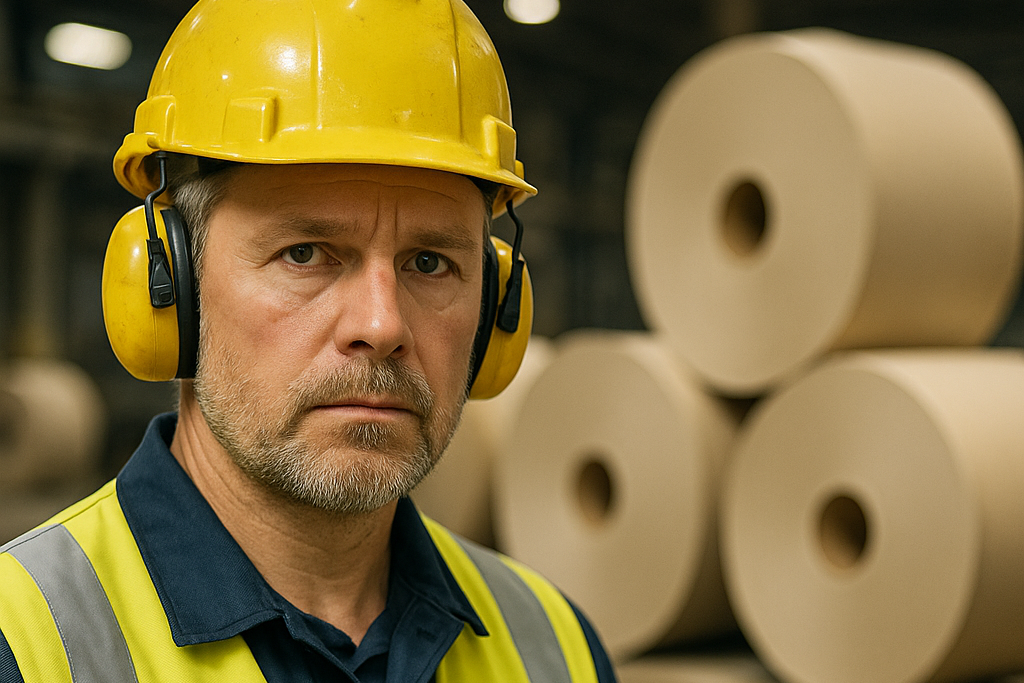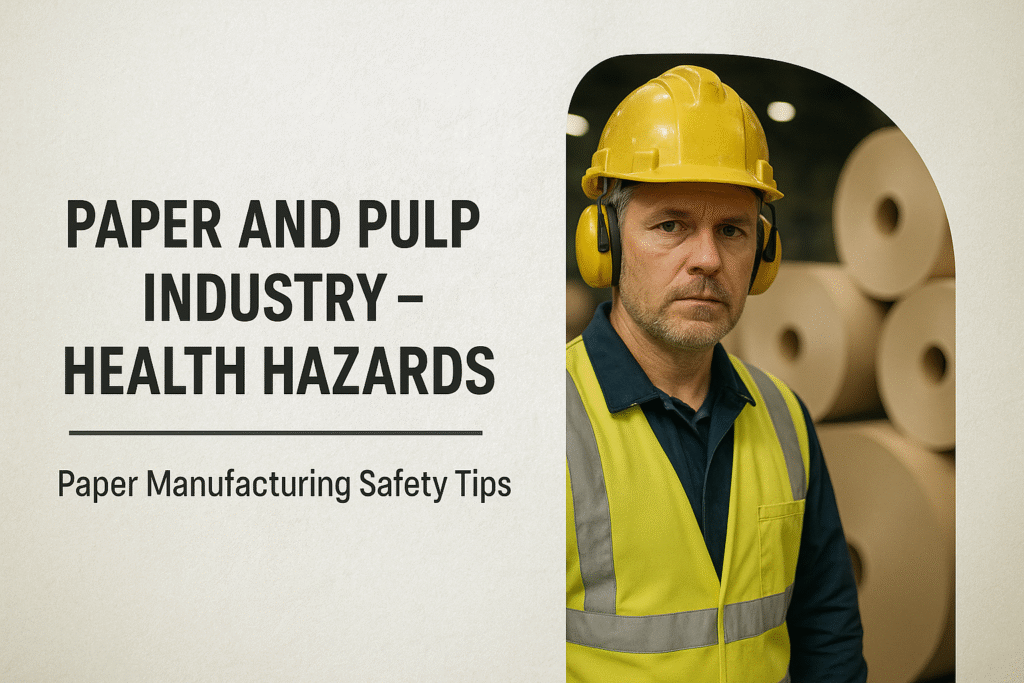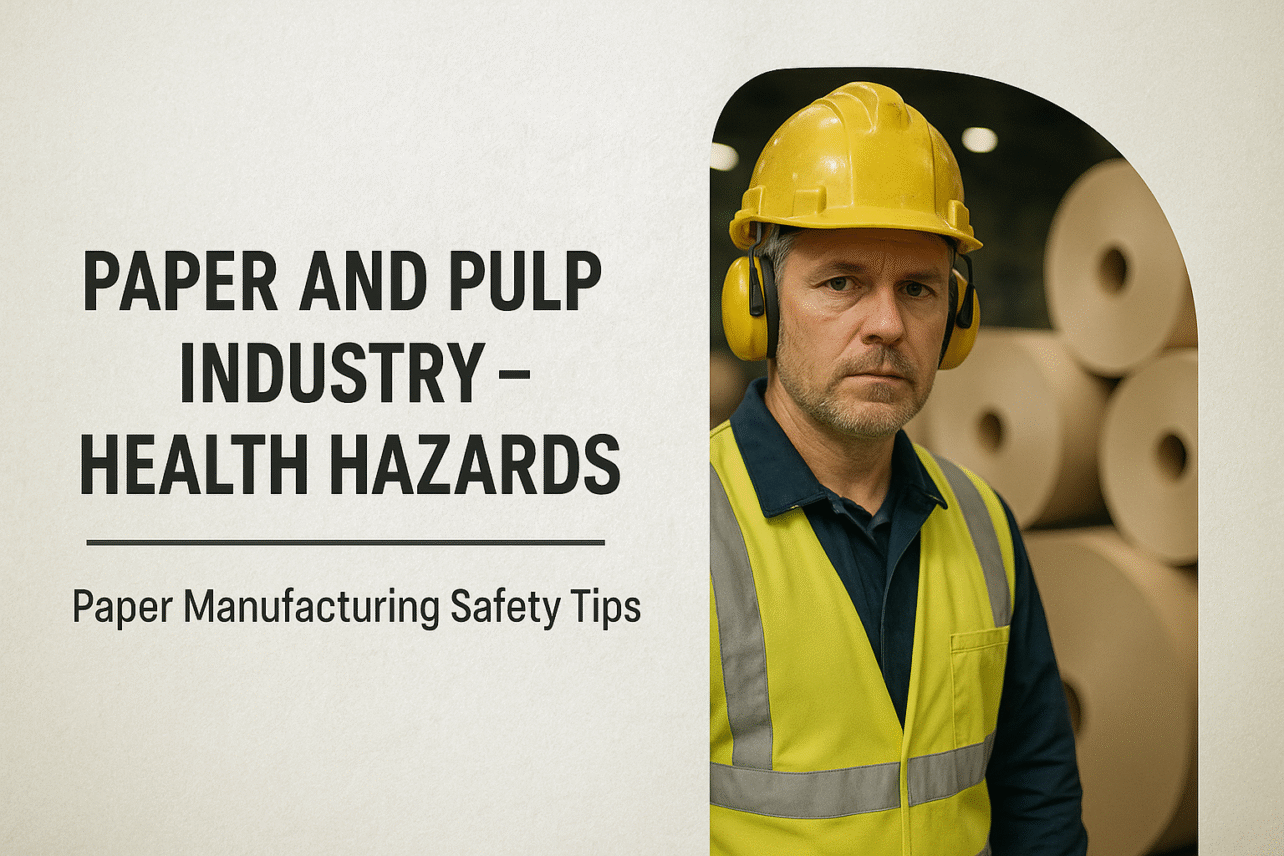Paper Manufacturing Safety Tips are crucial for ensuring a safe and healthy workplace in the paper and pulp industry. From chemical exposures to machine entanglement, this sector faces numerous occupational hazards that must be managed proactively.
In this article, we will explore common health hazards, practical safety strategies, and key precautions workers and managers should follow to create a safer environment.
Understanding Health Hazards in the Paper and Pulp Industry
The paper and pulp industry poses several health risks that workers must be prepared to address. Some of the most common hazards include:
- Chemical Exposure: Chemicals like chlorine, hydrogen sulfide, and sodium hydroxide are commonly used in processing, causing skin burns, respiratory issues, and even long-term illnesses (source).
- Airborne Dust and Fibers: Inhalation of wood dust can lead to respiratory diseases, nasal cancers, or skin conditions.
- Machine-Related Injuries: Large rotating machinery used in paper production can cause crush injuries, amputations, or fatal accidents.
- Noise Pollution: Extended exposure to loud machinery can result in hearing loss without proper protection.
- Ergonomic Strains: Repetitive tasks and manual material handling often result in musculoskeletal disorders.
Each of these hazards emphasizes the need for strong, effective Paper Manufacturing Safety Tips at all levels of operations.
Why Following Paper Manufacturing Safety Tips is Critical
Ignoring Paper Manufacturing Safety Tips can lead to severe consequences — not just for workers but for overall plant operations.
High injury rates translate into lost productivity, legal penalties, increased insurance costs, and damaged reputations. According to WorkSafeBC, maintaining workplace health and safety is one of the most cost-effective ways for industries to boost efficiency and employee morale.

By embedding safety into daily routines and workflows, paper mills can drastically reduce accident rates and maintain compliance with occupational health standards such as OHSA and ISO 45001.
Common Paper Manufacturing Safety Tips for Every Plant
1. Implement Comprehensive Chemical Handling Procedures
Chemicals in paper production must be handled with extreme care. Employers should:
- Provide Material Safety Data Sheets (MSDS) for all chemicals.
- Offer training sessions on safe chemical storage, usage, and disposal.
- Ensure emergency showers and eye wash stations are readily accessible.
- Mandate the use of chemical-resistant PPE like gloves, aprons, and face shields.
More chemical safety advice can be found from the Occupational Safety and Health Administration (OSHA).
2. Maintain Machinery and Install Safety Guards
Machines involved in pulping and paper making are powerful and dangerous. Essential machine-related Paper Manufacturing Safety Tips include:
- Conducting regular maintenance inspections.
- Installing machine guards to prevent accidental contact.
- Lockout/Tagout (LOTO) procedures before maintenance or repair work.
- Training employees on recognizing machine malfunction symptoms.
Internal link: If you’re interested, check out our guide on Heavy Equipment Hazards: How to Stay Safe on Site.
3. Control Exposure to Dust and Airborne Particles
Dust generated during pulping and cutting processes can be deadly. Protect workers by:
- Installing local exhaust ventilation systems at dust-intensive points.
- Providing workers with respiratory protection.
- Conducting air quality monitoring.
- Scheduling frequent cleaning routines to remove buildup.
For deeper information, refer to the Canadian Centre for Occupational Health and Safety’s guide on wood dust hazards.
4. Protect Against Noise-Induced Hearing Loss
The noise levels in a paper mill often exceed safe limits (85 dB), making hearing protection critical. Paper Manufacturing Safety Tips for noise include:
- Issuing earplugs or noise-canceling earmuffs.
- Conducting annual hearing tests for employees.
- Implementing engineering controls such as acoustic barriers or silencers.
5. Reduce Ergonomic Injuries
Repetitive strain injuries are common in manual tasks like stacking paper rolls or packaging. To reduce risks:
- Rotate tasks among workers to reduce strain.
- Use lifting aids like forklifts and conveyor belts.
- Train workers on proper lifting techniques.
Visit OHSE.ca for additional workplace ergonomics resources.
Additional Paper Manufacturing Safety Tips for Best Practices

- Emergency Response Plans: Every facility must have detailed plans for fires, chemical spills, and machine emergencies.
- First Aid Training: Equip workers with first aid knowledge specific to chemical burns, cuts, and crush injuries.
- Housekeeping: Maintain clear pathways and organize storage to prevent slip, trip, and fall accidents.
- Hydration Stations: Working around heat and machines requires workers to stay hydrated, especially during summer months.
- Encourage Reporting: Establish a no-blame culture for reporting near misses and safety hazards promptly.
By adopting these critical Paper Manufacturing Safety Tips, plants can create a stronger culture of safety, ensure legal compliance, and protect their most valuable asset — their workers.
Conclusion: Make Paper Manufacturing Safety Tips a Daily Habit
Paper Manufacturing Safety Tips should not be reserved for safety audits or inspections; they must become a daily commitment across all operations.

By focusing on chemical safety, machine safeguarding, dust control, noise reduction, and ergonomic protection, the paper and pulp industry can dramatically reduce health hazards and create a thriving, resilient workplace.
At the end of the day, safeguarding workers is not just a legal responsibility — it’s a powerful investment in the future of your business.
Start applying these Paper Manufacturing Safety Tips today and build a stronger, safer workplace!


No comments yet